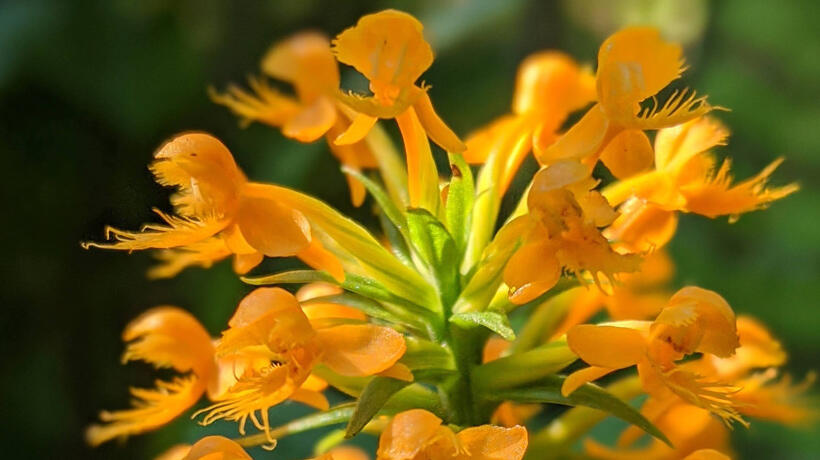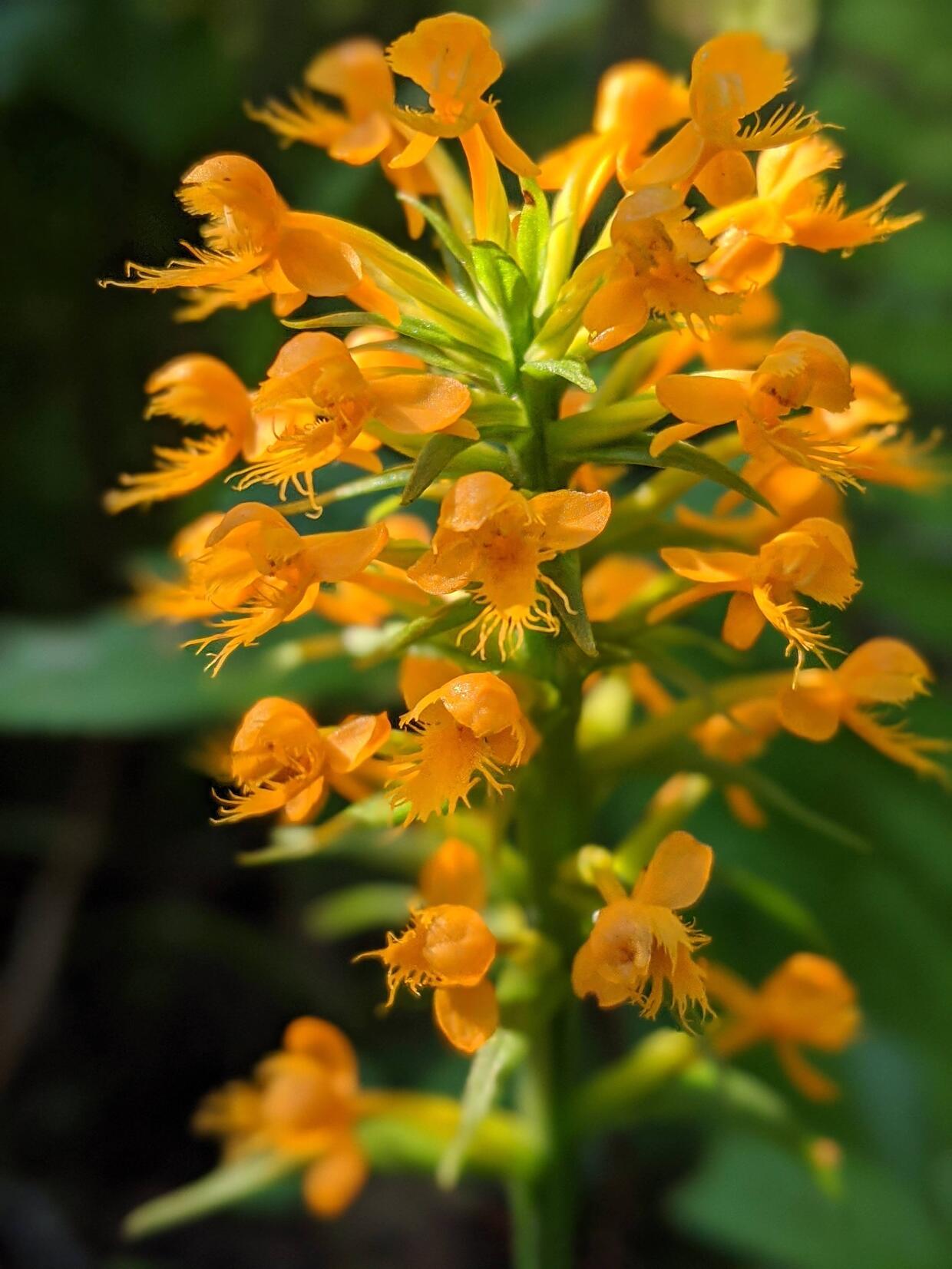- Division of Fisheries and Wildlife
- MassWildlife's Natural Heritage & Endangered Species Program
Media Contact
Media Contact, MassWildlife

After nearly two decades, a small population of the state-endangered crested fringed orchid (Platanthera cristata) was recently rediscovered in Bristol County by a botanist with the Massachusetts Division of Fisheries and Wildlife (MassWildlife). The diminutive orchid with striking orange blooms had not been seen in Massachusetts since 2001 despite repeated survey efforts by botanists. This is currently the northernmost known crested fringed orchid population in the United States and the only population known in New England. The next closest population is located on Long Island, New York, where it is a also a state-endangered species. Due to its rarity, the location of this plant is not being disclosed. The orchid population was found on public land that is partially protected, although habitat changes, invasive species, deer browse, and climate change are still threats.
“Although I locate many rare species every year, this find took my breath away,” said Dr. Robert (Bob) Wernerehl, State Botanist for MassWildlife’s Natural Heritage and Endangered Species Program. “Given the condition of the site, and the knowledge that many botanists have searched fruitlessly for this rarity for years, I was not at all expecting to find it. But while forcing my way through dense shrubby thickets laden with poison ivy, I kept reminding myself to move slowly and keep looking. Glancing down, a bright orange spot in the tangle of branches caught my eye, and as I bent over the plant, I knew immediately I had found it, but thought, can this really be happening?” It was indeed the elusive orchid and he was able to locate and record eight plants. Historically there have been only four documented records of this species on this site: 1905, 1908, 1987, and 2001 with only one or two plants found each time. In another nod to history, Wernerehl observed that the rediscovery of such a rare species this particular year was fitting; 2020 marks the 30th anniversary of the Massachusetts Endangered Species Act (MESA).
Blooming in August, the crested fringed orchid’s numerous small but showy orange blooms grow in a densely flowered spike 1–5 inches long. Flowering begins at the bottom of the spike and over time blooms open further up the stalk. A slender nectar-filled spur juts out from the back of the flower. The delicate and deeply fringed flower is pollinated by a bumblebee, but no doubt attracts hummingbirds and other pollinators. The orchids are usually found growing in the moist acidic soil of bogs, wet meadows, swamps, and depressions in pinelands habitats. In many cases, the habitats where the orchid is found are often associated with periodic fires. This rediscovered orchid population is in a shrubby wetland thicket of sweet pepperbush, swamp azalea, and poison ivy. Plants which typically grow in this habitat include rushes, irises, lilies, swamp rose-mallow, goldenrods, and marsh fern. Other plants associated with these orchids include asters, slough grass, wild cranberry, and Canada reed grass. Shrubs include viburnum, maleberry, and sheep laurel. Crested fringed orchids are found from southeastern Massachusetts south to Tennessee, central Florida, Arkansas and along the Gulf Coast to Texas.
For more on endangered species conservation in Massachusetts, click here to learn about MassWildlife’s Natural Heritage & Endangered Species Program.
For more on the crested fringed orchid, click here for a fact sheet.


